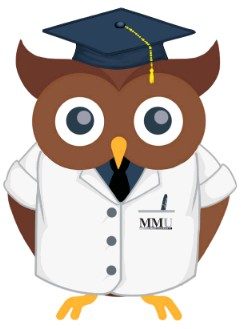
Article Information from the Field of Master Mind Anatomy (MMANA)
Shared from the home of: Joseph Mercado
Article Author: Emily McPeek
Blog Post #502
To: Entrepreneur
Re: Human Anatomy
Article Title: Anatomy and Organs of the Human Body
Keyword: Anatomy
Universal Principle: Law of Physiology
Date: Thursday, October 11, 2018 at 3:14 p.m. ⏰
Dear Entrepreneur,
The human body is a unique and complex organism made up of many interconnected body systems.
Each of these system assists with maintaining homeostasis for the whole body, and no one body system can do the job of another. Our health depends on all of these different systems functioning and interacting in the proper way.
Organ systems in the human body:
The first organ system of the human body we will discuss is the nervous system, which is made up of the central nervous system (the brain and spinal cord) and peripheral nervous system. The brain is the organ responsible for cognitive processes, emotions and sensory processing, and coordinates the communication and control of all of the other organ systems and their functions.
One of the ways the nervous system communicates with other parts of the body is through the endocrine system, which contains the main endocrine glands responsible for producing hormones, including the pituitary, thyroid, adrenal, pancreas, parathyroid, and gonads.
Next, the musculoskeletal system consists of the human skeleton (including bones, cartilage, joints, tendons and ligaments) and attached muscles. This system provides structure, support, protection and movement for the body. Bones are also the main storage area for calcium and phosphate in the human body.
The circulatory system consists of the heart and blood vessels (arteries, veins and capillaries). The heart is a muscle which pumps (contracts) in order to circulate blood throughout the body, containing oxygen, energy, nutrients, immune cells, signaling molecules (e.g. hormones) and metabolic waste products. Blood is made in the bone marrow, and the spleen plays an important role in the storage and recycling of certain blood components.
The respiratory system is closely linked to the circulatory system and consists of the nose, nasopharynx, trachea and lungs. Special cells in the lungs carry out gas exchange, allowing the body to absorb oxygen from the air into the blood stream while removing carbon dioxide and other waste gases from the blood and exhaling them back into the atmosphere.
The digestive system begins with the mouth and continues through the esophagus, stomach, small and large intestine, and ends in the rectum. Other important accessory organs in this organ system are the salivary glands, liver, pancreas and gallbladder. The function of this system is to convert food into small, non-toxic nutrient molecules that can then be circulated throughout the blood to feed the body’s cells, and then excreting the leftover material as waste.
The integumentary system include the body’s protective coverings: the skin, hair and nails, as well as sweat glands, sebaceous glands and other important structures located within the skin. The skin acts as part of the primary immune system.
The rest of the immune system consists of white blood cells, thymus, lymph nodes and lymph channels, which are also part of the lymphatic system. The immune system provides the body with a mechanism to differentiate its own cells and tissues with foreign substances and to neutralize or eliminate the latter with certain proteins such as cytokines, antibodies, and toll-like receptors.
Anatomy Human Body Organs:
The urinary system is made up of the kidneys, ureters, bladder and urethra. This system is necessary for maintaining proper levels of hydration (tonicity) in the body’s cells as well as removing harmful waste products.
Finally, the reproductive system is made up of the gonads (ovaries in women and testes in men) as well as the internal and external sex organs, which are different for males and females.
The reproductive system produces gametes in each sex, a mechanism for the gametes to combine and form a new organism, and an environment in which the new organism’s first 9 months of development can take place.
To Your Anatomy of Success,
Emily McPeek
Author, Writer, and Content Contributor for HumanAnatomyBody.com
![]()
➡ Have a question about this article?
Please send us an email message below and we will serve you with an answer momentarily.

